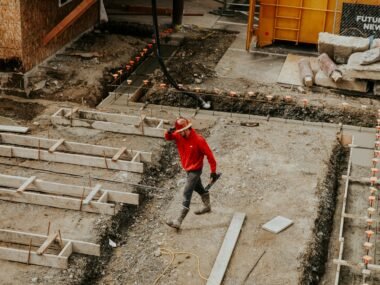Qualifying for a work visa in Australia is a structured yet rewarding process that opens doors to a vibrant career and lifestyle in one of the world’s most sought-after destinations.
The path to eligibility requires meeting specific criteria that showcase your skills, experience and value to the Australian economy.
Australia offers various work visas tailored to different needs, such as the Temporary Skill Shortage (TSS) Visa, the Skilled Independent Visa and employer-sponsored options.
Key steps include proving your English proficiency, having relevant work experience and, in many cases, completing a skills assessment by a recognized authority.
This process is often points-based, where factors like age, education and specialized skills can increase your eligibility.
Understanding these requirements not only boosts your chances but also gives you a competitive edge in a points-tested system where only the most qualified are selected.
A successful application not only grants you entry to Australia’s job market but, for many, provides a pathway to permanent residency, making it a truly transformative opportunity.
Why Australia Needs Skilled Workers
Australia is known for its high standard of living, excellent work-life balance and diverse job opportunities.
But the country’s workforce is not immune to skill gaps, particularly in sectors like healthcare, engineering, technology and agriculture.
The Australian government uses work visas to address these shortages by inviting skilled professionals from around the world.
However, to qualify for a work visa in Australia, it’s essential to meet specific criteria that demonstrate your skills align with Australia’s economic needs. Let’s dive into those criteria and what you can do to increase your chances of securing a work visa.
Types of Work Visas Available in Australia
Navigating through visa options is the first step. Australia offers several work visas, each catering to different types of workers and employment situations.
The most common types include the Temporary Skill Shortage (TSS) Visa (subclass 482), Skilled Independent Visa (subclass 189) and the Employer Nomination Scheme (ENS) Visa (subclass 186). Understanding which visa best suits your profile is key to knowing how to qualify for a work visa in Australia.
Temporary Skill Shortage (TSS) Visa (Subclass 482)
The TSS Visa allows Australian businesses to sponsor skilled workers for a temporary period. To qualify, your occupation must be on the Medium and Long-term Strategic Skills List (MLTSSL).
You also need to meet work experience and English language requirements. The TSS Visa is highly suitable for those in high-demand fields and offers a pathway to permanent residency if the occupation remains on the MLTSSL.
Skilled Independent Visa (Subclass 189)
For those without an employer sponsor, the Skilled Independent Visa is ideal. It’s a points-tested visa, which means applicants must score a minimum number of points based on factors like age, qualifications, work experience and English proficiency.
This visa provides permanent residency, making it attractive for highly skilled individuals who meet the points threshold.
Gaining a high score increases your chances of securing this visa, as only the most competitive applicants receive invitations.
Employer Nomination Scheme (ENS) Visa (Subclass 186)
If you have an employer in Australia willing to sponsor you, the ENS Visa could be the right path.
It grants permanent residency and is ideal for highly skilled workers in specific roles. To qualify for this work visa, you must meet English language, health and character requirements and your employer must prove that there’s no Australian available for the role.
Points-Based System: The Core of Qualifying for a Skilled Work Visa
For most skilled work visas, Australia uses a points-based system to determine eligibility. This system is straightforward but highly competitive. Points are awarded based on various criteria and your score will determine if you’re invited to apply.
Here’s how the points system works and how you can leverage it to qualify for a work visa in Australia.
Age
The younger you are, the more points you’ll score. Applicants aged between 25 and 32 receive the maximum points.
As you get older, your score potential decreases, so applying while you’re younger can give you an edge.
English Language Proficiency
Australia values English language skills, especially since it’s crucial for workplace integration.
You’ll need to take an approved English test, such as IELTS, PTE or TOEFL. Scoring well on these tests, especially at the “Proficient” or “Superior” levels, can significantly increase your points.
Work Experience
Work experience in your field is another essential factor. You can earn points for relevant work experience, with maximum points given for eight or more years of experience in your occupation.
This criterion applies to both Australian and overseas work experience, although Australian experience is awarded more points.
Educational Qualifications
Higher educational qualifications add value to your application. A Ph.D. or master’s degree in a relevant field can boost your score, particularly if your qualifications align with an occupation on the MLTSSL. Recognized trade qualifications can also help if your profession is skill-based.
Specialist Education and Professional Year Programs
If you completed a specialist education qualification in Australia or undertook a Professional Year in certain fields like engineering or IT, you might earn additional points.
These programs are highly beneficial if you’re already in Australia on a study visa and wish to transition to a work visa.
Navigating Skills Assessment: A Crucial Step
To qualify for most skilled work visas, you’ll need to undergo a skills assessment conducted by an Australian government-approved authority. The purpose is to verify that your skills meet Australian standards for your occupation.
Each profession has a designated authority—Engineers Australia for engineers, AITSL for teachers and ACS for IT professionals.
Passing this assessment is mandatory for visa eligibility, so ensure you thoroughly understand the requirements and gather all necessary documents.
Language Proficiency Tests: IELTS, PTE or TOEFL?
Australia has strict English language requirements for work visa applicants. You’ll need to prove your proficiency through a recognized test like IELTS (International English Language Testing System), PTE (Pearson Test of English) or TOEFL (Test of English as a Foreign Language).
The higher your score, the more points you gain. For most skilled visas, the minimum required level is “Competent,” but scoring “Proficient” or “Superior” can substantially improve your overall points.
Securing Sponsorship: How to Get an Australian Employer to Sponsor You
Securing a job offer from an Australian employer willing to sponsor you can streamline the visa process. Employer-sponsored visas, such as the TSS and ENS, require an employer to demonstrate that they’ve made a genuine effort to fill the role locally before considering an overseas applicant. So, how can you increase your chances of getting sponsored?
- Build a Network: Connect with Australian employers through professional networks like LinkedIn. Tailor your resume to highlight skills that are in high demand in Australia.
- Target In-Demand Occupations: Focus on industries like healthcare, construction, IT and engineering, where skill shortages are pronounced.
- Use Job Portals and Recruitment Agencies: Sites like SEEK, Indeed and Jobactive are popular in Australia. Some agencies specialize in recruiting foreign workers, making them a valuable resource.
Meeting Health and Character Requirements
To qualify for a work visa, Australia requires all applicants to meet health and character standards. Health checks ensure you don’t pose a risk to public health or place excessive demands on Australia’s healthcare system.
This typically involves a medical exam and sometimes an X-ray. Additionally, a character assessment verifies that you have no serious criminal record. These requirements are standard for all visa types and failure to meet them can disqualify your application.
Application Process: Step-by-Step Guide
- Choose the Right Visa: Start by determining which visa best matches your qualifications and goals. Explore the requirements for each and make sure you’re eligible.
- Skill Assessment: Undergo the necessary skills assessment for your occupation. This is mandatory for most skilled visas and must be completed before applying.
- Submit an Expression of Interest (EOI): For points-tested visas, submit an EOI through SkillSelect, an online platform where you express your desire to apply for a work visa. Your EOI will rank you based on your points score.
- Receive an Invitation to Apply: If your EOI meets the cutoff points, you may receive an invitation to apply for a visa. This is a crucial step—only invited applicants can proceed with their visa application.
- Lodge the Visa Application: Once invited, submit your application along with all required documents, including your skills assessment, test results and health checks.
- Wait for Approval: Visa processing times vary, so it’s essential to stay patient and check your application status regularly.
Common Mistakes to Avoid When Applying for a Work Visa in Australia
Navigating the work visa application can be complex and mistakes can lead to delays or even rejections. Here are some common pitfalls to watch out for:
- Incomplete Documentation: Ensure all documents are complete and accurately filled out.
- Inadequate English Test Scores: If your test scores don’t meet the visa requirements, it can lower your points or even make you ineligible.
- Wrong Visa Selection: Choose the visa that aligns with your profile and goals. Applying for the wrong visa can lead to rejections.
- Not Meeting Points Requirements: If you’re applying for a points-based visa, make sure your score is competitive.
Planning Your Move: Life in Australia on a Work Visa
Once your work visa is approved, it’s time to start preparing for your move. Living in Australia offers a unique blend of work opportunities and lifestyle benefits.
Cities like Sydney, Melbourne and Brisbane offer strong job markets, but each city has its unique vibe. Whether you’re into beach life, city hustle or laid-back towns, Australia has something for everyone.
And if you’re on a pathway to permanent residency, life in Australia becomes even more rewarding.
Qualifying for a work visa in Australia requires careful planning, meeting eligibility criteria and understanding the nuances of the application process.
From choosing the right visa type to securing a job offer and undergoing a skills assessment, every step is crucial.
By taking the time to understand these elements, you can put yourself in a strong position to succeed in your visa application. Australia is a land of opportunities and with the right approach, you can make your dream of working there a reality.
People also read:






